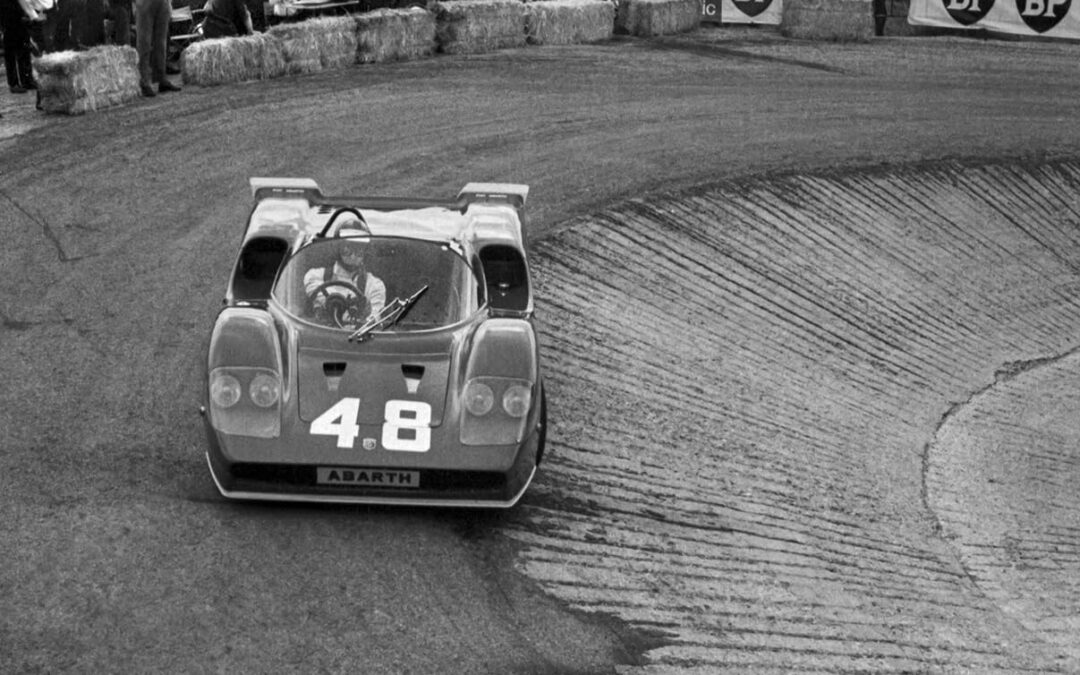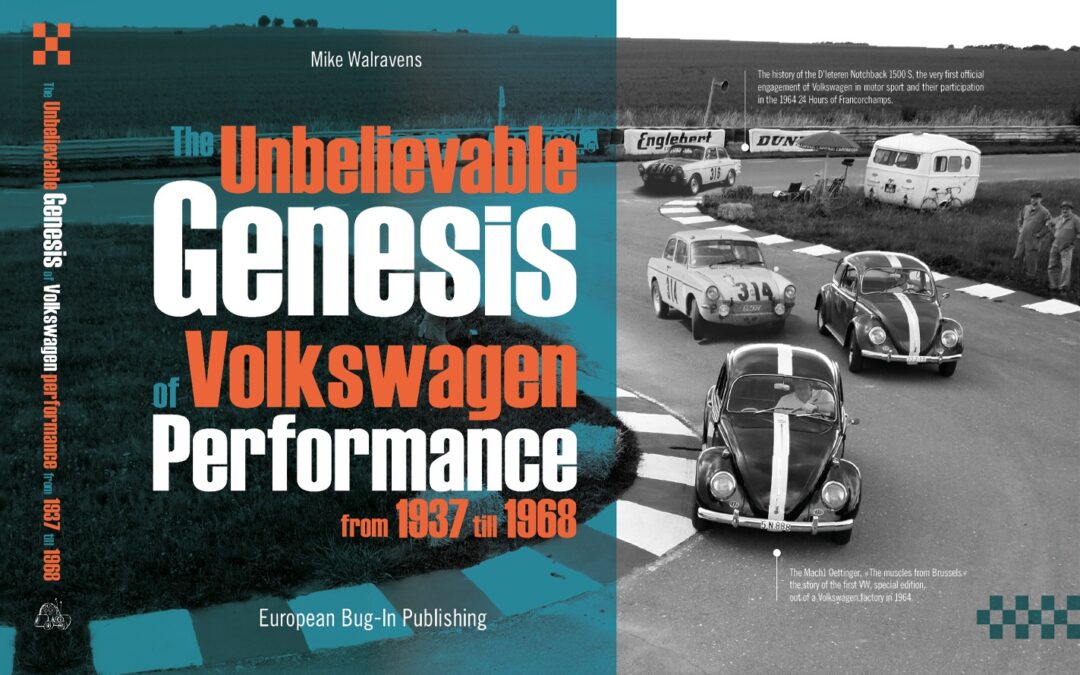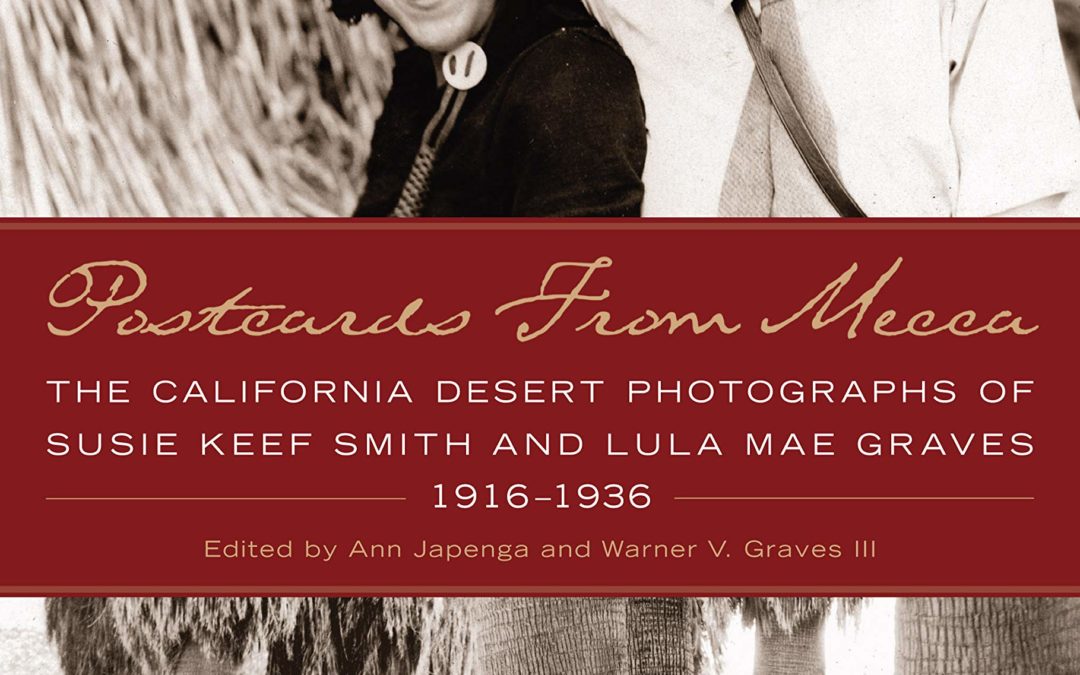
Susie Keef Smith was seeking escape from a troubled home life and the havoc of childhood polio when she took a job as postmaster in Mecca, on the edge of California’s Salton Sea. She and her cousin Lula Mae Graves set out to photograph the last of the prospectors, burro packers and stage stops in the remote desert to the east. They traveled by burro, foot and Ford though sandy washes and roadless canyons, armed with a .38 revolver and a large format camera. While making postcards for the Post Office spinner rack, the women were remade in the wilderness and wound up creating an unparalleled portrait of one of the lesser-known deserts in the West. Susie Smith’s photos were nearly lost to history when upon her death they were tossed out by a county estate administrator. A savvy archaeologist jumped into a dumpster and rescued many of the photos in this book. Postcards From Mecca presents portraits of a mysterious land along with the story of its heroic chroniclers, self-taught documentary photographers of the 1920s and ’30s.

Become a media blasting and metal preparation expert with knowledge from the pages of this book and apply it to get the best possible results for your project.
In Media Blasting & Metal Preparation: A Complete Guide, restoration expert and veteran author Matt Joseph provides all the instruction you need to prepare your car, motorcycle, or anything made of metal for the next stages of restoration. Covered are basic metal considerations, such as type and size of metal; intended purpose of cleaning the metal; approaches to cleaning metal through chemical, mechanical abrasive, and media abrasive systems; mastering the processes for consistent results; small- and large-scale projects; and post-cleaning prep procedures.
A key component, often overlooked, in automotive restoration is metal preparation. In essence, all the best bodywork, primer, and fancy paint won’t do you any good if the metal surface it adheres to is not expertly prepared. How many times at a classic car show have you seen imperfections in the paint, bubbles coming from underneath, and body filler separating from the metal? In almost every instance, this is the result of poor metal preparation during the initial stages of the restoration process.
In short, anyone who takes shortcuts in the metal preparation area of restoration is virtually guaranteed disappointment down the road. With this handy new guide, Joseph provides all you need to know for a successful and long-lasting restoration.

The Mach 2 F-4 Phantom is probably one of the best known of the RAF’s postwar jet fighter aircraft. The British Government bought the US export model F-4M (RAF designation FGR Mk 2) as the successor to the ageing Hawker Hunter and the first Phantom aircraft were handed over in 1968. Between 1969 and 1992, fourteen RAF squadrons operated the Phantom in the ground-attack and air defense roles, playing vital roles in NATO against potential Soviet and Warsaw Pact aggressors. Nos. 56 and 74 Squadrons relinquished the last aircraft of the type in late 1992, marking the end of the Phantom era. Ian Black flew the Phantom with the RAF in the demanding low-level air defense role during the 1980s, while simultaneously amassing an incredible color photographic record of the aircraft. A selection of his stunning images graces the pages of this book. As both a former Phantom pilot and an accomplished photographer, Ian brings a level of authority to this book that would be difficult to achieve for someone who has not had such ‘hands on’ experience of this brute of an aircraft. Concentrating on the Phantom’s final years of RAF service during the late 1980s and early 1990s, The Last of the Phantoms features the author’s own graphic first hand accounts and anecdotal material drawn from other ex-Phantom aircrew, supported by some truly fantastic color air-to-air photography.
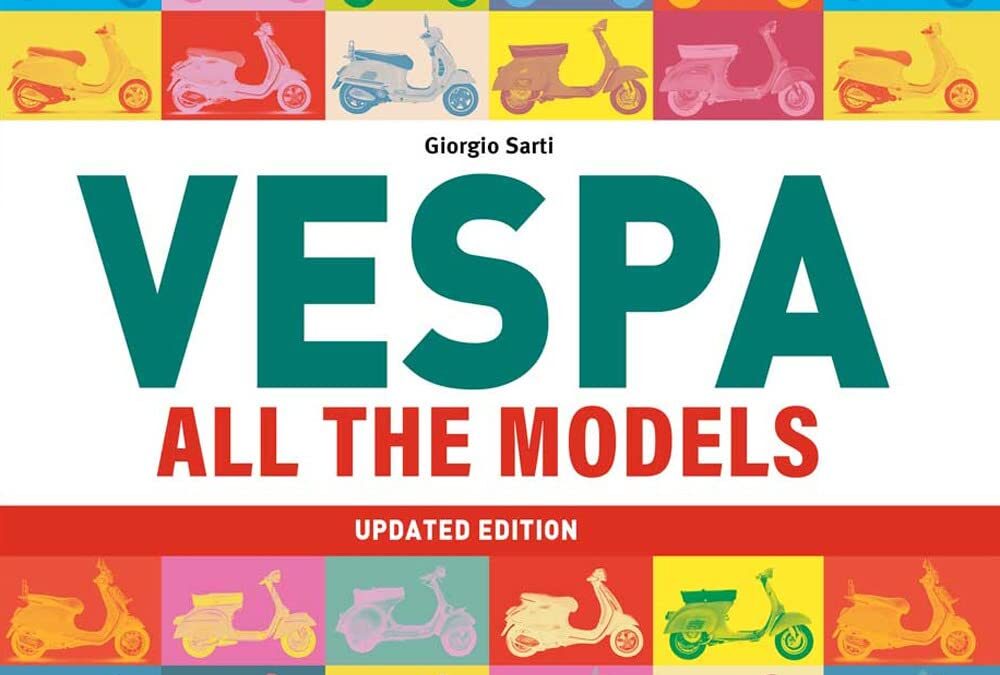
The most comprehensive and up to date catalogue of every Vespa model ever published.
This revised edition includes all the models introduced since the last edition was released in 2020, as ever subdivided into large and small frame categories. Among these new versions are the 125 and 300 GTS 75th Anniversary, the 125 and 300 GTS trim variants and the 50, 125, and 150 models, here too detailed in their various liveries. This new, systematic catalogue is completed by the 946 and, naturally, the Vespa Elettrica, the great innovation of recent years.
The celebrated scooter was born at Pontedera in the post-war period and went on to feature in one of the most extraordinary stories ever to have involved an industrial product.
This book presents an overview unique in the completeness and wealth of its information regarding every model produced: a reference work of particular interest to users, collectors, and all Vespa enthusiasts.

The Triumph Trident was a ground-breaking three-cylinder 750cc motorbike that was ahead of its time, though pipped to the production post by the Honda CB750 Four. It was also the last major motorcycle project by Triumph. In this thoroughly researched and comprehensive book, Roy Maddox takes the reader through the full range of models, including the BSA Rocket 3, the Meridien and the A75 Hurricane, as well as the technical changes that took place and the range of specials and one-offs. The book also includes a buyer’s guide with owners’ feedback and modifications as well as details of owners’ clubs and events.As this book reveals, the Triumph Trident T150 was a milestone in British and world motorcycle design that also achieved huge success on the racing track. As it reaches the 50th anniversary of its launch, the Triumph Trident T150 is as appreciated today by its many owners and enthusiasts as it was in its heyday.

Satisfy your dream collector-car desires with this one-stop reference for starting or expanding your collection beyond traditional classics and muscle cars.
Focusing on the interests and needs of Generation X and Millennial car collectors, The NextGen Guide to Car Collecting offers a concise history of car collecting to present day, guidance on car buying and living the car-collector life, and an overview of collector cars with a focus on cars built from the 1970s through the 1990s while also touching on more contemporary cars. Chapters highlight Japanese, American, and European cars, particularly those models that have experienced the greatest growth in collector interest over the past decade.
The NextGen Guide to Car Collecting explores the many ways the Internet and social media have changed the classic car marketplace. You’ll learn how to buy a classic car online without suffering buyer’s remorse, as well as the four critical keys to a happy collector-vehicle relationship: 1) possessing discretionary cash for the initial purchase; 2) obtaining a thorough knowledge of the car and its ownership; 3) the critical pre-purchase inspection; and 4) access to a work space.
You’ll also find out why the popularity of late twentieth-century specialty cars will continue to grow (think increasing electronic complication and the still-large number of enthusiasts for whom “self-driving” means driving themselves) and explore the attributes that makes these cars desirable collector vehicles.
In addition, the book looks at the significant increases in quality and reliability of post-1970s machines and how that impacts their collectibility. Finally, learn why expectations that your newfound classic could outlast our current crop of lithium-ion-dependent electric cars may not be unrealistic: recent developments like ride-hailing and sharing services; expanded public transit; rental bikes and scooters; and garage condos and other storage options could actually extend the life of your “new” classic permitting you to truly tailor the use of your classics.
Whether your collection requires a one-stall garage or a pole barn, the practical, useful information and keen perspective of The NextGen Guide to Car Collecting will ensure you pull this volume from your shelf time and again.
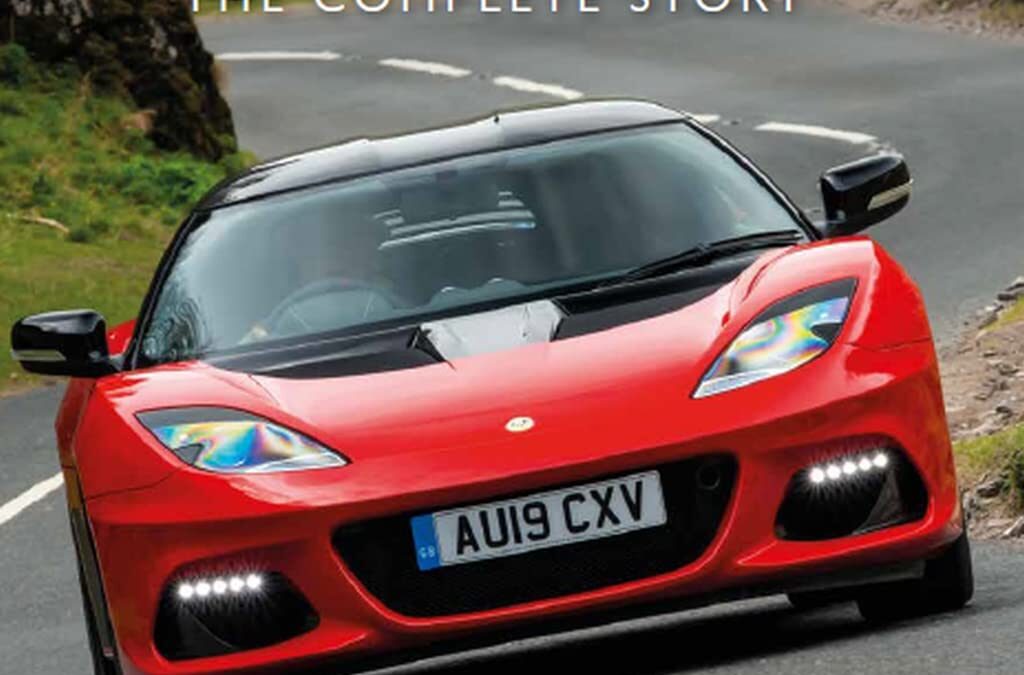
The story of the Lotus marque encompasses ongoing technical innovation on road and track, from the Mark 1 in 1948 to the World’s most powerful electric hypercar – the Evija – in 2021. Founded in 1952 from Colin Chapman’s hobby, Lotus flourished by producing aerodynamically brilliant lightweight sports-racing cars, progressing into Formula 1 in 1958. Jim Clark and Team Lotus won the 1963 and 1965 F1 World Championships for Drivers and Constructors, as well as the Indianapolis 500. Jochen Rindt won the 1970 World Championship posthumously for Gold Leaf Team Lotus, and in 1972, Emerson Fittipaldi was F1 World Champion driving the JPS Type 72, with the Team winning the Constructors’ prize in 1972 and 1973. Mario Andretti won the F1 World Championship for JPS Team Lotus in 1978 but, surprisingly, this proved to be their last of seven F1 World Championship wins. On the road, the Elite showcased the brand from 1957. Next, the Elan was a fine-handling fibreglass-bodied sports car, while the Seven provided exhilarating motoring for DIY enthusiasts. The 1963 Lotus Cortina was a fast road car and a success on track. The Elan Plus 2 was built alongside the Elan two-seater and Europa, and in 1974 the road car range went upmarket, powered by Lotus’s own engines, with the Elite Mk 2 and Éclat, and the mid-engined Esprit produced between 1976 and 2004. Tragedy struck with the sudden death of Colin Chapman in December 1982, aged 54. General Motors acquired Group Lotus in 1986, selling up to Romano Artioli’s Bugatti in 1993, enabling the ground-breaking Elise to launch in 1996. Ownership of Group Lotus passed to Malaysian car maker Proton, and in 2000, the Series 2 Elise and the Exige were released, maturing gradually over the next twenty years. The Toyota V6-powered Evora was announced in 2006. In 2017, Group Lotus was acquired by the global automotive company Geely, ushering in a fresh, financially secure era. Launched in 2020, the 2,000bhp all-electric Evija became the new Lotus flagship. Lotus blossoms anew.
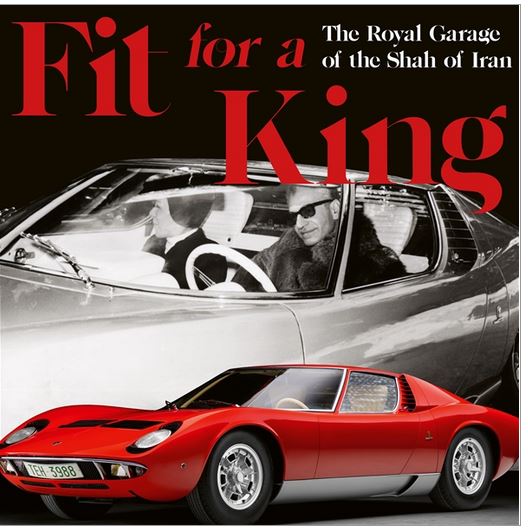
Iran has a monarchical history spanning over 2,500 years. Almost all of Iran’s Kings have had vast unchecked powers as they built, and lost, some of the largest empires in history. These vast powers led to Iran’s Kings being referred to as “Shahanshah” meaning literally the “King of Kings”.
With the advent of the automobile, Iran’s Shahanshahs procured some of the world’s most renowned automobiles for their royal garages starting from the first car to be imported to Iran, a Gardner-Serpollet 10 hp, to the famed Maserati 5000GT “Scia de Persia”, specially-ordered and owned by Iran’s last Shah, Mohammad Reza Shah Pahlavi.
In his broad spanning work, Iranian automotive historian Borzou Sepasi traces the royal garage of each Iranian Shah, starting with Mozaffar ad-Din Shah Qajar in 1900, who despite importing the first car, forbade drivers from going faster than carriages, and all the way up to the 1979 revolution. In an important postscript, the fate of many of the cars covered in the book following the end of monarchical rule in Iran, are shown.
The book also intertwines many of the historical events in Iran with the cars of the period, highlighting the special role these vehicles played. Dalton Watson is proud to present this little-known period of unique automotive history to its readers.
230mm x 280mm
-
- Hard cover with dust jacket
- 564 pages
- 1,046 photographs

Morris Cars 1948-1984 is a handy guidebook to all the Morris cars produced between 1948 and 1984.
Morris was a prominent marque in Britain and around the world from the outset of production in 1913. In the postwar era Morris cars were exported throughout the world and many were assembled in overseas plants. Many Morris models retain an enthusiastic following today, even though the last car was produced in 1984.
Illustrated in full colour, and with detailed information including colour schemes, optional equipment and technical specifications, this is a complete catalogue of the cars of that era, and will be an invaluable identification guide for anyone interested in these classic British cars. It was written by marque expert, Ray Newell, who has had a long association with Morris Cars, been Secretary of the Morris Minor Owners Club since 1983, and a founder member of the Morris Vehicles Association in 2013.

Dick Seaman was the archetypal dashing motorsport hero of the 1930s, the first Englishman to win a race for Mercedes-Benz and the last grand prix driver to die at the wheel before the outbreak of the Second World War.
Award-winning author Richard Williams reveals the remarkable but now forgotten story of a driver whose battles against the leading figures of motor racing’s golden age inspired the post-war generation of British champions. The son of wealthy parents, educated at Rugby and Cambridge, Seaman grew up in a privileged world of house parties, jazz and fast cars. But motor racing was no mere hobby: it became such an obsession that he dropped out of university to pursue his ambitions, squeezing money out of his parents to buy better cars. When he was offered a contract with the world-beating, state-sponsored Mercedes team in 1937, he signed up despite the growing political tensions between Britain and Germany. A year later he celebrated victory in the German Grand Prix with the beautiful 18-year-old daughter of the founder of BMW. Their wedding that summer would force a split with his family, a costly rift that had not been closed six months later when he crashed in the rain while leading at Spa, dying with his divided loyalties seemingly unresolved. He was just 26 years old.
A Race with Love and Death is a gripping tale of speed, romance and tragedy. Set in an era of rising tensions, where the urge to live each moment to the full never seemed more important, it is a richly evocative story that grips from first to last.

- A complete history of these impressive vehicles which includes technical specs of all models and production lines
- Includes a separate timeline-poster of the history of the Land Cruiser
- Revised and extended edition
Developed in 1951 as Toyota’s version of a Jeep-like vehicle, the Land Cruiser has been produced in convertible, hardtop, station wagon and utility truck versions plus its current flagship 4WD vehicle. Its reliability and longevity has led to huge popularity, especially in Australia where it has reliably performed under the toughest environmental conditions – “Gets you there … gets you back”!
The author, Alexander Wohlfahrt, tells the history of these impressive vehicles, describes the people who drive them and their philosophy of this type of car – whether they use it for fun or business. Last but not least the reader will also find the complete technical specifications of all models and production lines within this highly illustrated book.
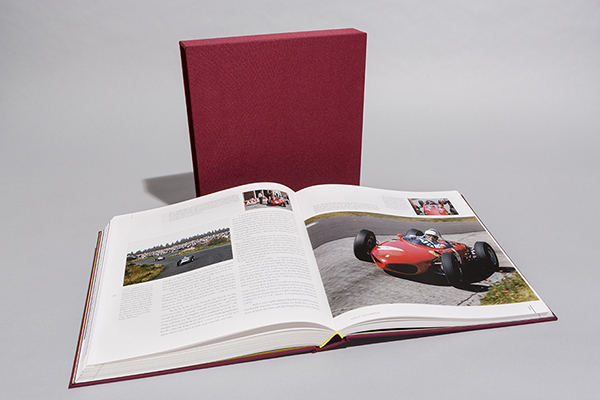
Based upon many hours of conversations taped exclusively for ‘Inside Track’, together with other material accumulated over many years of friendship with John Lamm, Doug Nye and others, The Racing Autobiography tells the story of Phil Hill’s life in his own words, from his childhood in 1930s California through his later years as co-owner of the highly successful Hill & Vaughn car restoration business, a respected motor sport writer and TV commentator, and much loved elder statesman of the American vintage and classic car movement with an unrivaled knowledge, in particular, of the Packard marque and its cars.
Illustrated by numerous photographs, letters, race posters and programmes, and other automobilia from the Hill Family archive, plus many other photographs of Phil’s racing career and beyond – including his last great victory in the charismatic Chaparral 2F at Brands Hatch in 1967 – the book offers an unrivaled view of this remarkable man.
The Racing Autobiography is hardbound with a cloth-covered case and inset photographs to match the two volumes of the Collector’s Edition, with the same page size and 428 pages, and is presented in its own cloth-covered slipcase.
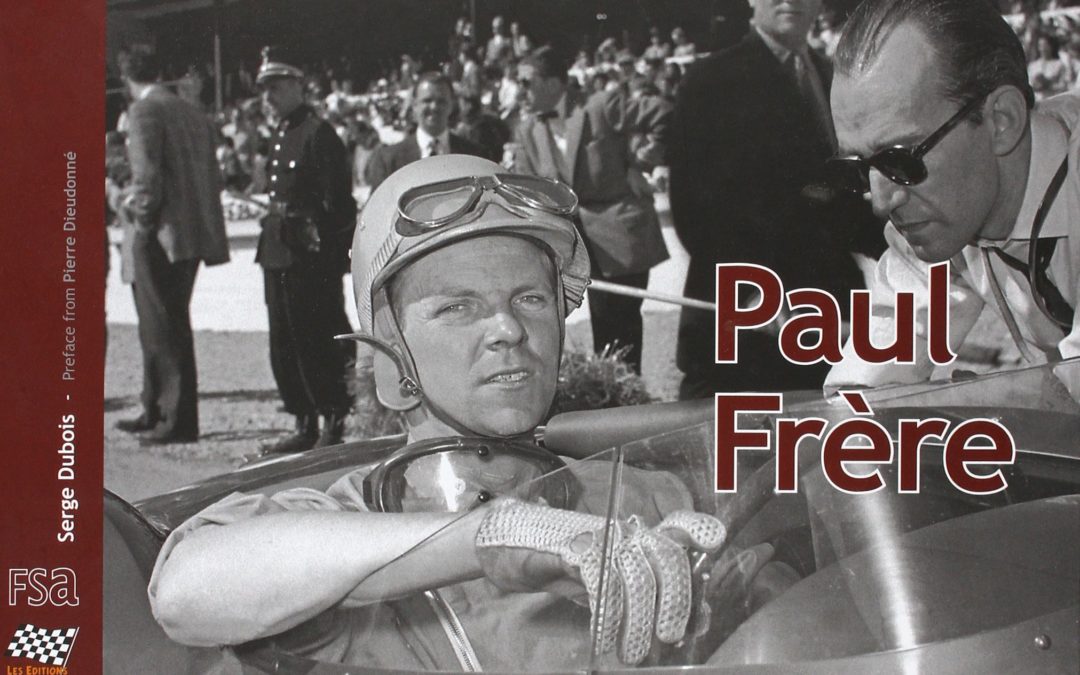
The Story of Paul Frère Journalist and Racing Car Driver
Paul Frère died in 2008 aged 91 and this is the first posthumous work on one of the world’s foremost auto journalists to appear. Still professionally active until his last months, the Belgian was a top flight racing driver in the 1950s and after winning Le Mans at the fourth attempt, retired to concentrate on journalism. Already well known as a race reporter, he became the doyen of motoring writers, his insatiable curiosity about all things automotive and mastery of detail making his copy amongst the most authoritative anywhere. Never a formally trained engineer, he could nonetheless grasp technical concepts and convey them and his ability to do this in English and German as well as his native French gave him international visibility. Author of several works on driving and racing, the way he could communicate exactly how a car was behaving meant that his skills as a consultant were always in demand; long a privileged insider at Porsche, he was also much appreciated in Japan where he struck up enduring friendships. For Mazda and Honda in particular, his assessments helped them build a European flavour into their cars.
An exceptionally modest and unassuming individual, he always appeared surprised at the reverence he inspired and the charismatic Frère always managed to make his interlocutor feel special. Now his life is celebrated in this compilation by Serge Dubois of his early life, racing career, and his activity as a journalist and adviser. The format of the book is landscape and the work is primarily pictorial. The author has had access to family and personal archives and the result is numerous previously unpublished photographs. The bulk of the text comprises reports of Frère’s races, mostly his own accounts turned into the third person; a substantial section is given over to tributes from individuals who knew and worked with him.
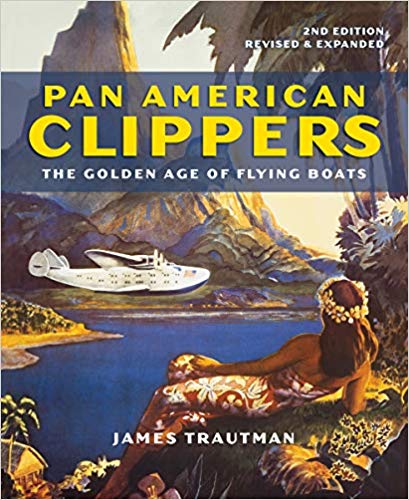
The photographs and artwork will enable readers to grasp the magnificence of the transoceanic flying boats…The accurate, authoritative text will provide information that is new to all but the exceptionally well-informed aviation buff and nonspecialist historian.”
–Choice
For a world recovering from the Great Depression, the Pan American Airways Clipper symbolized luxury, adventure and a brighter future. Illustrated with rare period photographs, vintage travel posters, magazine ads and colorful company brochures, Pan American Clippers covers all aspects of the Golden Age of Pan American’s graceful “flying boats.”
This edition has an additional 16 pages to add more historical and current information and provide additional detail and context to the historical importance of the flying boats, including:
- Pan Am’s Art Deco terminals
- the fate of the last Pan Am Clippers and where to see the survivors
- the Foynes Flying Boat Terminal, Ireland
- Trippe and Lindbergh’s groundbreaking flight to Asia by way of the Great Circle Route (Canada-Alaska-Siberia-Japan-China)
- Shediac, New Brunswick, landing site of 24 Savoia Manchetti S-55 flying boats from Rome en route to Chicago’s Century of Progress International Exposition
- Pan Am enters politics when Frank Roosevelt uses it in Latin America to sidestep the World War II Neutrality Act
- Trippe’s long-held dream of flying mail and passengers across the Atlantic Ocean to Europe, and the opening of LaGuardia Airport.
Visionary Pan Am founder Juan Trippe knew the importance of international travel to the 20th century, and his pioneering airline played a central role in the advancement of transoceanic flight, setting overseas time and distance records, providing airmail delivery and eventually as troop and cargo transports for the Allies during World War II. By dramatically reducing travel time and opening up international air travel to the general public, Pan Am Clippers forever changed the world.
This captivating, informative and richly illustrated book takes readers back to a time of glamor, romance and progress, when dreams once thought impossible were suddenly a reality.
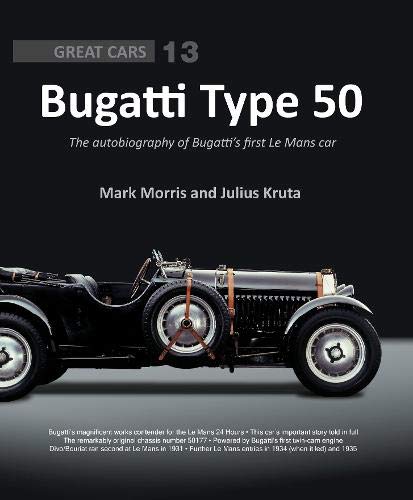
Launched in 1930, the Bugatti Type 50 heralded a new era with the introduction of the Molsheim marque’s first twin-cam design, a supercharged 4.9-litre straight-eight engine of prodigious power. At a time when brute force was needed to win the Le Mans 24 Hours, a competition version was developed and three such Type 50s took part in 1931. The car around which this book is focused, 50177, was leading the famous endurance race when the team withdrew it owing to tyre failures that had afflicted the sister cars, causing one to crash heavily at high speed.
The fascinating story of 50177, and the Type 50 in general, is told in this brilliantly researched and superbly illustrated book in the Great Cars series. Introductory chapters explain the economically perilous world of 1931, the genius of Ettore and Jean Bugatti, the bloodline of large-capacity Bugatti engines, and the Type 46 from which the Type 50 was derived. There follows an in-depth exploration of the Type 50’s design and development, including the Miller inspiration behind its twin-cam engine.
The four Le Mans races in which Type 50s took part form the core of the book and tell a story of promise unfulfilled. The subject car, 50177, raced three times, in 1931 as a works entry with race no. 5 (driven by Albert Divo and Guy Bouriat) and in 1934 and 1935 with works assistance as no. 2 (driven by Pierre Veyron and Roger Labric). A section about the drivers presents illustrated biographies of the four men who raced 50177 as well as the four others in the 1931 works team — Louis Chiron and Achille Varzi in no. 4 and Maurice Rost and Count Caberto Conelli in no. 6. Post-war, three-time Le Mans winner Luigi Chinetti bought 50177 in 1949 and took it to America, where it spent nearly 50 years with five different owners. The last of them was Miles Coverdale, a passionate Bugatti collector who kept the car for 23 years and uncovered much of its history through correspondence with former works mechanics, notably Robert Aumaître.
Co-authors Mark Morris and Julius Kruta, wellknown in the Bugatti world for their immense knowledge and enthusiasm, present a wealth of fresh information and illustration in this fine book.
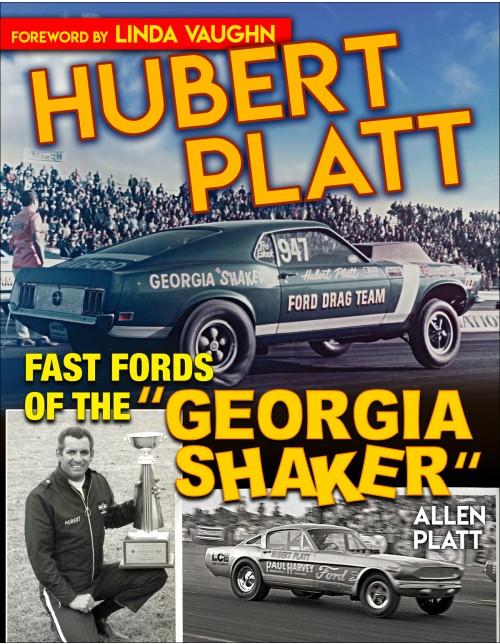
Webster’s Dictionary lists the term showman as “a notably spectacular, dramatic, or effective performer.” In the art of drag racing, Hubert Platt checked all boxes. Known as the “Georgia Shaker,” Platt cut his motoring teeth on the long straightaways and twisty back roads of South Carolina while bootlegging moonshine. After a run-in with the law in 1958, Platt transferred his driving skills from illegal activity to sanctioned drag racing and began one of the most dominant runs in drag racing history until his retirement in 1977.
After stints in 1957, 1938, and 1962 Chevrolets, Platt’s next ride was a Z11 Impala, which carried his first “Georgia Shaker” moniker. Once Chevrolet pulled out of sanctioned racing, Platt found a new home with Ford for 1964 and remained there until he hung up his helmet. Some of the cars he campaigned became icons in their own right. His factory-backed and personal machines included a 1963 Z11 Impala, 1964 Thunderbolt, 1965 Falcon, 1966 Mustang Funny Car, 1967 Fairlane 427, 1968-1/2 Cobra Jet, 1969 CJ Mustang, 1970 427 SOHC Mustang, and 1970 Boss 429 Maverick.
A 1986 NHRA Hall of Fame member, Platt’s lasting legacy on the sport can’t be denied. Whether he was launching his Falcon with the door open, conducting a Ford Drag Team seminar, or posting low E.T. at the 1967 US Nationals in his Fairlane, Platt’s imprint on drag racing was all-encompassing. His son and biggest fan, Allen Platt, shares his dad’s iconic career in, Hubert Platt: Fast Fords of the “Georgia Shaker”!

Travel back in time to a colorful period in commercial aviation at one of the most fascinating airports in the world. Embark on a visual tour of airlines and aircraft that have since departed forever. From the once powerful carriers such as Trans World Airlines (TWA) and Continental Airlines to the smaller, lesser known commuter airlines that lasted only a few months. With stunning photographs and full, descriptive captions, Departed Wings-Los Angeles is a visual tribute to the exciting decade after airline deregulation and the airlines and liveries that came and went.
It has been forty years since the Airline Deregulation Act was signed into law in October 1978, and the far reaching effects of the act continue to be felt today. Intended to remove strict oversight by the government on airline routes, fares, and services, the Airline Deregulation Act fostered competition, development of a hub-and-spoke system, as well as entry of new airlines in this “free” market. The decade following the Airline Deregulation Act saw several airlines both large and small start operations hoping to establish business in a specific niche market.
In the first of a series of hardbound books, Departed Wings-Los Angeles LAX, is a visual tribute to the post-deregulation decade at one of the most famous airports in the world. Los Angeles was host to numerous start-up airlines as the result of deregulation, as well as a strong-hold to major domestic carriers and international airlines that placed LAX on their route maps. With ninety, spectacular photographs and detailed, descriptive captions explaining the history of the various airlines and aircraft that transited LAX during the years 1980-1990, Departed Wings-Los Angeles LAX is sure to rekindle memories of one of the most exciting eras in commercial aviation.

The Triumph TR2 and TR3 were the heralds of a long-running line of Triumph Sports Cars, culminating in the futuristic TR7 of the 1970s. They were truly sporting cars, suitable for competition and enjoyable fast road motoring. The quintessential British Sports Car of the 1950s, more than 83,000 side-screen TRs were produced, which contributed greatly to British manufacturing prestige – and the postwar economy – with approximately 90% being exported, principally to the US and Canada. Triumph TR2, & TR3 – All models (including 3A & 3B) 1953 to 1962 is written with the sole aim of giving prospective buyers key knowledge to choose the best example available according to budget. It covers models TR2, TR3, TR3A, and the rare TR3B, produced between 1953 and 1962. All aspects of the car are examined in detail and with many illustrations to back up the text. There is also advice on such matters as non-period modifications. Since the 1980s, the TR models have become finite in number, much cherished by owners, and increased in value, making it very important to know and understand the points to look for and the potential pitfalls of choosing a rogue example. Having bought an imported TR3a, restoring it and preparing it for racing, the author is also a TR2/TR3 consultant for Club Triumph, and a regular contributor to its magazine, making him well-placed to guide you through finding and choosing the best model for you.




